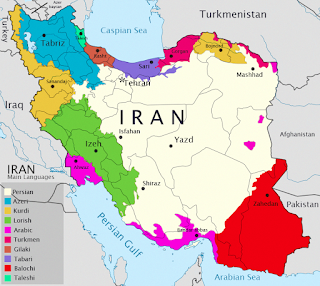I'll be leaving for Iran in a few days and just want to start my blog. Let's start with Kurdistan, where my heritage lies (at least from dad's side of the family).
Where is Kurdistan and who are the Kurds? I'm going to explain this as simply as possible because this is a question I have to answer often.
My father was a Kurd, from Kurdistan province; he was born in the capital city, Sanandaj. Kurdistan is in the northwestern part of Iran, shown in dark yellow on the map below. But there are also Kurds in Turkey, Iraq, and Syria.
Kurds are Medes.
 |
| Map of Iran |
http://www.innovationiseverywhere.com/iran-take-advantage-of-persian-diaspora-become-startup-nation/
The Medes and the Persians, both ancient Iranians, formed the two major Indo-European tribes. They were distantly related to the Scythians, the Hittites, the Greeks, and the Romans and spoke a related language. They were nomadic people and traveled around central Asia with their horses and cattle.
 |
| The Steppes Region of Central Asia (Wikipedia) |
By 1200 BC, both the Medes and the Persians moved south into the Iranian Plateau and the Medes established themselves as powerful neighbors of Assyria with their capital at Ecbatana (modern Hamadan) near the Zagros Mountains.
 |
| Zagros Mountains in Kurdistan, Iran (Watercolor by S. Ardalan) |
 |
| Kurdistan, Iran (Photo S. Ardalan) |
By 600 BC, the Medes and the Persians had united into one group under one king, and were riding horses in war, thus creating a strong cavalry which made them more powerful than anyone else in western Asia.
Under Cyrus the Great, the combination of the Medes and Persians created the Ancient Iranian Empire (wrongly known in the West as the Persian Empire).
Under Cyrus the Great, the combination of the Medes and Persians created the Ancient Iranian Empire (wrongly known in the West as the Persian Empire).
 |
| Right: Mede Soldier Wearing Trousers Center: Persian Soldier in Persian Clothing Persepolis (Photo: S. Ardalan) |
Now here is a surprise: Due to their horsemanship, both men and women wore trousers! We're talking about 2,600 years ago! The first recorded evidence of trousers goes back to around 600 BC on the rock carvings of Persepolis.
 |
| Kurdish Woman Riding a Horse in Traditional Clothing (Photo: K. Farrokh) |
 |
| Traditional Kurdish Headgear (Photo: S. Ardalan) |
So here I am, showing off my heritage in my profile picture! Women in Kurdistan wear beautiful clothing; pants under full skirts for riding horses, and hats with ornaments to show their wealth and status.
 |
| My Paternal Aunt in Kurdish Formalwear, 1950's. Photo: G. Ardalan |
My father's sister was quite stylish in her days. Here is a photo of her dressed in full traditional Kurdish clothing. Underneath the long dress she wore traditional trousers and her dress had slits up each side to allow her to ride a horse.
Please leave comments. I love reading them. If you have any questions, I'll try to answer as many as possible, and as soon as possible.
Just keep in mind that I might not have access to the Internet as often as I would like to while in Iran.
Note to Self: Start packing! You are procrastinating!
ReplyDeleteI didn't realize the significance of the Kurdish headgear or the wearing of pants by women. Fascinating.
ReplyDeleteHi, Maria. Yes, some interesting history here.
DeleteKurds are often mentioned in the news. Thanks for sharing a bit about their fascinating history and culture.
ReplyDelete